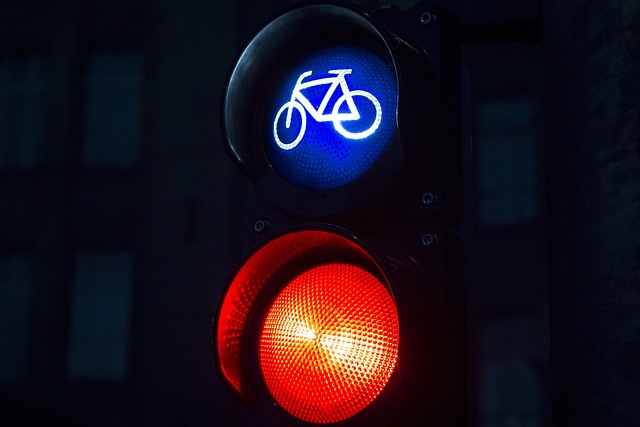Urban mobility is at a crossroads where the urgency of climate action meets the reality of growing traffic volumes. One of the most promising strategies to reconcile these pressures is the implementation of Target Traffic Zones (TTZs). A TTZ is a designated area within a city where the flow of vehicles is regulated to prioritize low‑emission modes of transport, streamline traffic, and reduce overall congestion. By focusing regulatory attention on specific zones, municipalities can create pockets of high‑efficiency mobility that ripple outward, encouraging the adoption of green technologies and driving a tangible decline in the ecological footprint of transportation.
Designing a Target Traffic Zone for Maximum Impact
The architecture of a TTZ begins with a clear set of objectives: lower emissions, improve air quality, and foster equitable access to transportation. Key design principles include: zoning boundaries that align with high‑traffic corridors; tiered access fees based on vehicle emissions; dedicated lanes for buses, bicycles, and pedestrians; and real‑time monitoring systems that feed data into adaptive traffic controls.
- Emission‑based pricing encourages drivers to switch to electric or hybrid vehicles.
- Dynamic signal timings reduce idling and smooth traffic flow.
- Public transport priority lanes cut commute times and increase ridership.
Technological Enablers for Carbon‑Neutral Traffic Management
Green technologies are the backbone of a successful TTZ. Advanced sensors, connected infrastructure, and data analytics work together to create a responsive system that continually optimizes traffic patterns. The following technologies are critical:
“Smart traffic lights that adjust their cycles based on real‑time congestion data can reduce stops by up to 30%.” – Mobility Research Institute
- IoT sensor networks that capture vehicle counts, speeds, and pollution levels.
- Edge computing hubs that process data locally, ensuring low latency responses.
- Machine‑learning algorithms that predict peak periods and pre‑emptively adjust traffic controls.
Economic and Social Benefits Beyond Emissions
Implementing a TTZ does not only yield environmental dividends; it also generates economic and social gains. Lower congestion translates into higher productivity, while improved air quality reduces healthcare costs associated with respiratory illnesses. Moreover, by incentivizing electric vehicles (EVs) and shared mobility, a TTZ can stimulate local businesses and create jobs in the green technology sector.
From a social equity perspective, TTZs can be designed to guarantee affordable access for low‑income residents by offering discounted public transit passes and maintaining pedestrian corridors that connect to essential services.
Case Studies: Cities Leading the Way
Several metropolitan areas have piloted or fully embraced TTZ concepts with measurable success:
- Amsterdam, Netherlands – The city’s concentric low‑emission zones have cut CO₂ emissions by 10% in the core area and doubled cycling traffic.
- Stockholm, Sweden – By integrating a congestion tax with vehicle emission standards, Stockholm has reduced its city‑wide vehicle emissions by 12% over five years.
- San Francisco, USA – The Emissions Reduction Program in the downtown corridor employs real‑time traffic signals and a dynamic pricing model that has decreased average travel times by 18%.
Policy Frameworks That Enable Target Traffic Zones
For a TTZ to thrive, supportive policy frameworks must align incentives across multiple levels of government. Key policy levers include:
- Legislation that authorizes emission‑based pricing and permits the use of technology for traffic monitoring.
- Funding mechanisms for infrastructure upgrades, such as the installation of sensors and the electrification of public transit fleets.
- Public engagement campaigns that communicate the benefits of TTZs, addressing concerns about accessibility and cost.
Collaboration with regional and national bodies ensures that the environmental targets of a TTZ contribute to broader carbon‑neutral goals.
Measuring Success: Metrics and Data Transparency
To validate the ecological impact of a TTZ, municipalities must commit to transparent data reporting. Core metrics include:
- Vehicle miles traveled (VMT) within the zone before and after implementation.
- Average emissions per vehicle, expressed in grams of CO₂ per kilometer.
- Public transport ridership growth rates and modal shift percentages.
- Air quality indices measured at multiple points throughout the zone.
Regular publication of these metrics builds public trust and provides a feedback loop for continuous improvement.
Challenges and Mitigation Strategies
Despite its promise, a TTZ can face obstacles such as political resistance, public backlash over perceived restrictions, and technological integration issues. Mitigation strategies include:
- Stakeholder workshops that allow residents and businesses to voice concerns and shape the zone’s rules.
- Phased rollouts that begin with pilot areas, enabling incremental scaling.
- Robust cybersecurity measures to protect traffic management systems from tampering.
Addressing these challenges proactively ensures the long‑term viability of TTZs.
Future Directions: From Target Traffic Zones to Mobility Hubs
Looking ahead, the concept of a Target Traffic Zone can evolve into multi‑modal Mobility Hubs that centralize transit services, charging stations, and green infrastructure. Integrating renewable energy sources such as solar roofs on public transit shelters and deploying vehicle‑to‑grid (V2G) technology will allow electric vehicles to feed excess energy back to the grid, enhancing grid resilience.
Emerging concepts such as autonomous electric shuttles, smart parking systems, and blockchain‑based incentive programs could further refine TTZ operations, pushing cities closer to carbon neutrality.
Conclusion: A Pathway to Sustainable Urban Mobility
The Target Traffic Zone represents a scalable, evidence‑based tool for reducing the ecological footprint of urban transportation. By combining precise policy measures, cutting‑edge green technologies, and an inclusive design ethos, cities can achieve measurable reductions in emissions, enhance quality of life, and foster a resilient, carbon‑neutral future. The success stories across Europe and North America affirm that, with collective will and strategic investment, the Target Traffic Zone can become a cornerstone of sustainable urban development worldwide.




